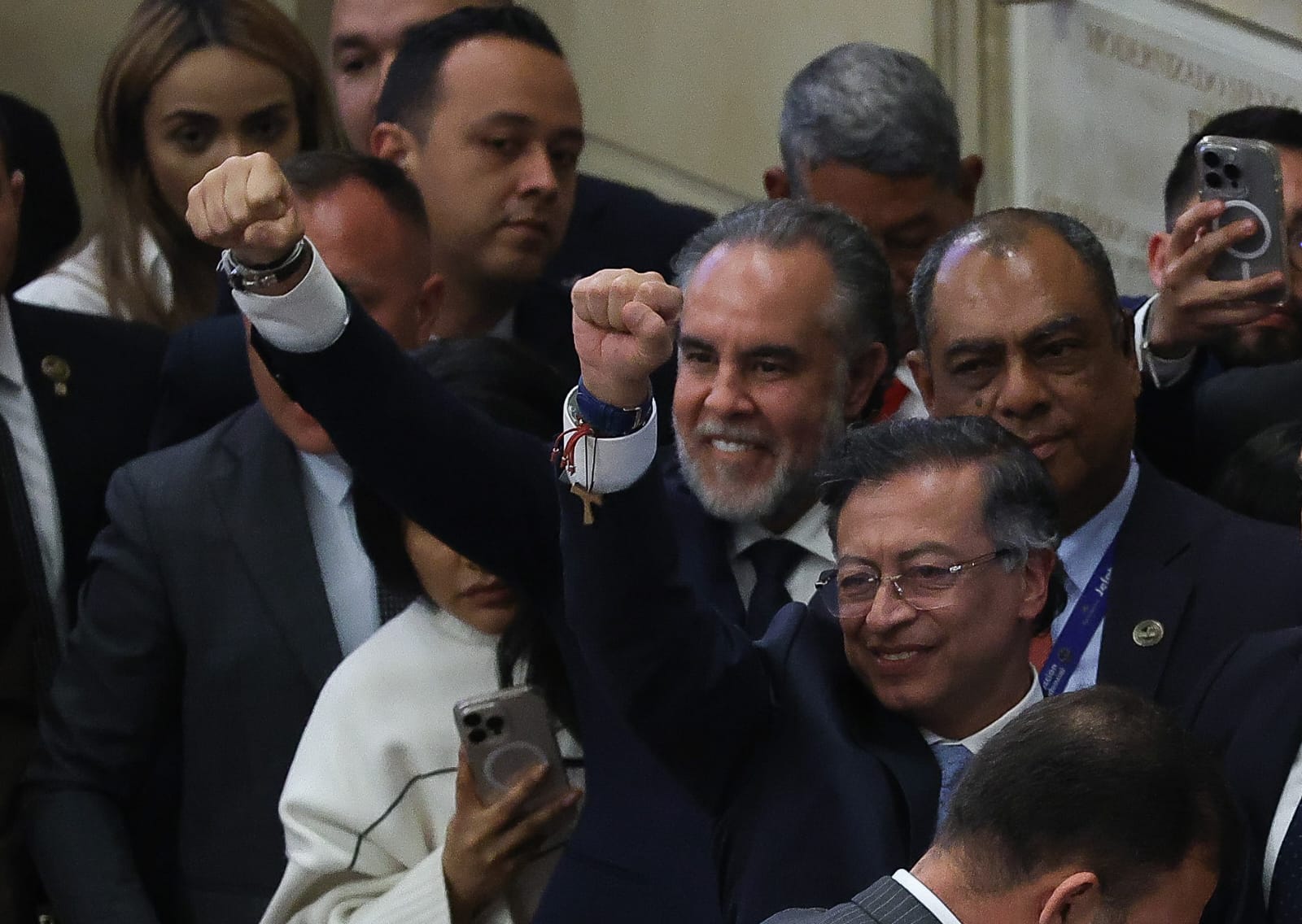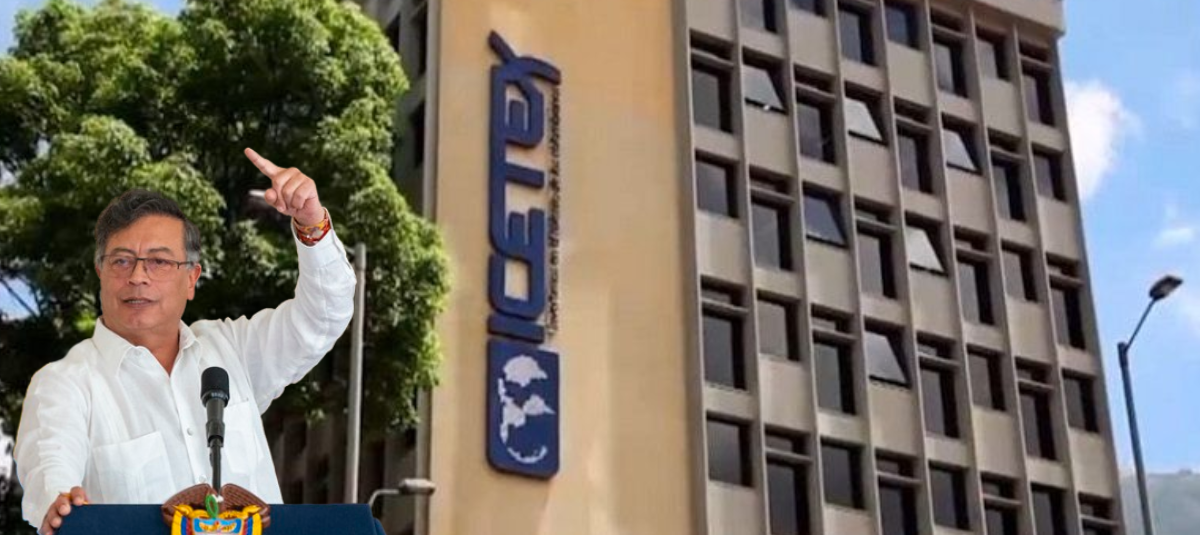Gustavo Petro's inaccuracies regarding higher education goals: a loan at a private university does not take away 100 spots from a public university.

The start of a new legislative term was marked by President Gustavo Petro's resounding speech from the Senate, where, among other things, he spoke about his administration's achievements in higher education.
"We have increased the number of free admissions to public universities by 155,000 new spots for young people. These new spots now total 193,000 new students," the president announced in front of all the congressmen, amid shouts from some and boos from others.
These and other figures and data were mentioned by Petro. EL TIEMPO took it upon itself to verify which of these achievements are real, which are fake, and which can be questioned.
"We've increased the number of free public university admissions by 155,000 new places for young people. These new places now add up to 193,000 new students." The figure of 155,000 new places created by President Petro corresponds to the end of 2024, and the figure of 193,000 would be the cutoff for the first half of 2025. These figures were also provided in an interview with EL TIEMPO by Education Minister Daniel Rojas.
However, these are numbers that cannot be verified, and if the calculation were to continue in the same way as in previous years, it would even be questionable.
In Colombia, there is only one system that records higher education enrollment data: the National Higher Education Information System (SNIES).
The problem is that the SNIES (National Statistics Institute) has updated its data through 2023, as these are typically released in August, showing the data for the previous year. Thus, the 2024 data would be released next August, and so far, it's impossible to verify the figure.
And for this reason , the figure of 193,000 new places accumulated for the first half of 2025 (which would not be known until August 2026) is even less verifiable, although this newspaper knows that this is the internal figure handled by the Ministry of Education.
As of 2023, the government's estimate is 65,000 new places. However, this figure has been questioned. To this end, the Ministry of Education doesn't calculate the total number of people enrolled in the higher education system, but rather the "First Year" indicator, that is, those enrolled in the first semester.
This causes phenomena such as the fact that from 2022 to 2023 the first-year undergraduate enrollment indicator will actually increase by 64,392 new places , but at the same time the total undergraduate enrollment will reflect 4,000 fewer students.
The debate is whether these can be considered new quotas that increase the "First Year" indicator, or whether quotas are understood throughout the entire academic career, in which case a drop in the number of students implies a drop in quotas.
This is how educational analyst Ricardo Rodríguez explains: “Having one more student in the first year doesn't necessarily mean that a new quota has been created , since if, due to the dropout rate, some young people drop out of school, their quotas can be used to accommodate first-year students. If the system continues with the same or fewer students, the same quotas are being used.”

President Petro leaving Congress. Photo: Néstor Gómez. El Tiempo
Icetex has various lines of credit: some financed by the institution itself, without state funding, and others that were subsidized and stopped accepting new students starting this year. Therefore, not all students with loans from this institution are financed with funds from the National General Budget.
While it's true that most young people who access loans through Icetex study at private universities, this doesn't necessarily mean subsidizing private education.
The reason is that student loans finance the student, not the higher education institutions. The reason for this is that it's young people who repay the loan, not the universities.
In addition, Icetex's subsidized lines offer a discount on tuition or interest paid by students, meaning the student is subsidized, not the institution.
In the case of the Generation E program, which stopped receiving new cohorts starting with this Government, once again the benefit was intended to finance the student but not the university, so the young person received a forgivable educational loan, had to meet certain requirements to have the debt forgiven, otherwise they had to pay.
Finally, it's important to mention that even if the goal of 500,000 new places is met, public universities don't have the capacity to accommodate all of the 991,000 undergraduate students studying at private universities, according to data from the National Statistics Institute (SNIES). Therefore, proponents of Icetex's educational loans see the institution as a tool to maintain and even increase access to higher education.
“Giving a scholarship or loan to one student at a private university is equivalent to taking it away from 100 students at a public university.” On the one hand, this is a very high figure that Petro himself unwittingly refutes, as he says that with less money than the one used to finance the Generación E or Ser Pilo Paga program (1.5 trillion pesos), 15,000 students were financed, the Government would have increased the quotas by 150,000 (with 910 billion pesos), that is, 10 times more, not 100 times more.
Even so, the figure remains significant, although some question it. For one thing, because of what was stated in the first point of this article: there is no certainty that the quotas have actually increased by this amount.
On the other hand, these figures could apply to Generación E or Ser Pilo Paga scholarship loans, but not to Icetex student loans (which are not related to the aforementioned programs), partly because in most cases, students must repay the loan, so the money is returned to the nation. In the case of subsidized credit lines, these are often interest rate discounts, so the principal must be paid by the student.
Furthermore, the subsidized credit lines with the possibility of capital forgiveness that were no longer offered this year were 50,000 that were intended for vulnerable sectors, which were no longer financed after the Government, in the General Budget of the Nation, allocated 1.05 trillion pesos to Icetex, of the 1.5 it had requested. That is, 0.5 trillion for 50,000 credit lines.

President Gustavo Petro. Photo: Private archive
Of all the data on the sector, this is the one President Petro was least dismissive of. If you discount the 1,300,000 undergraduate students in public institutions (Sena, where tuition has been free for years), you have around 900,000 students in the 64 public HEIs (including universities and technical and technological institutions).
However, not 902,000 students currently receive free tuition. This was confirmed by EL TIEMPO, which consulted with the Ministry of Education about this figure. The agency stated that "Between 2023 and 2025, it has invested more than $6.7 billion to guarantee free tuition for more than 874,000 undergraduate students at 64 public institutions."
“We have created two lines of construction for new university faculties of quantum sciences.” Specifically, President Gustavo Petro said: “We have created two lines of construction for new university faculties… Quantum Sciences, on the one hand, and Health Sciences, on the other. We just opened the Faculty of Quantum Sciences at the University of Magdalena. We opened the same one at the University of Manizales. We are going to open quantum sciences at the District University—we are working on that—and at the UIS (Industrial University of Santander).”
Regarding the University of Magdalena, the president is referring to ALUNA IA , a program announced a few months ago at the institution, which, rather than being a faculty of quantum sciences, will be a center for artificial intelligence with quantum technology. It is not a faculty ; it does not yet offer undergraduate programs in these fields, and its focus is on artificial intelligence, not quantum sciences.
Regarding Manizales, this refers to the University of Caldas (the University of Manizales is private). This institution already offers an undergraduate program in Artificial Intelligence Engineering. Meanwhile, the traditional Faculty of Engineering changed its name to the Faculty of Artificial Intelligence and Engineering. Despite this, nine of the ten undergraduate programs it offers are not related to Artificial Intelligence or quantum sciences.
MATEO CHACÓN ORDUZ | Education Deputy Editor
eltiempo



